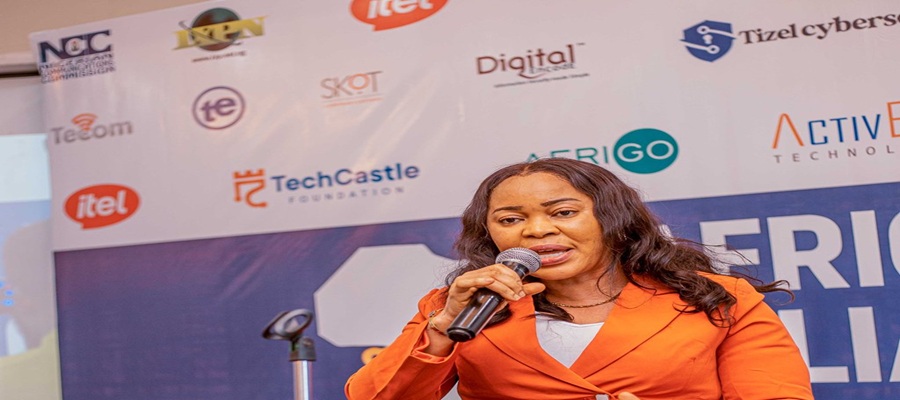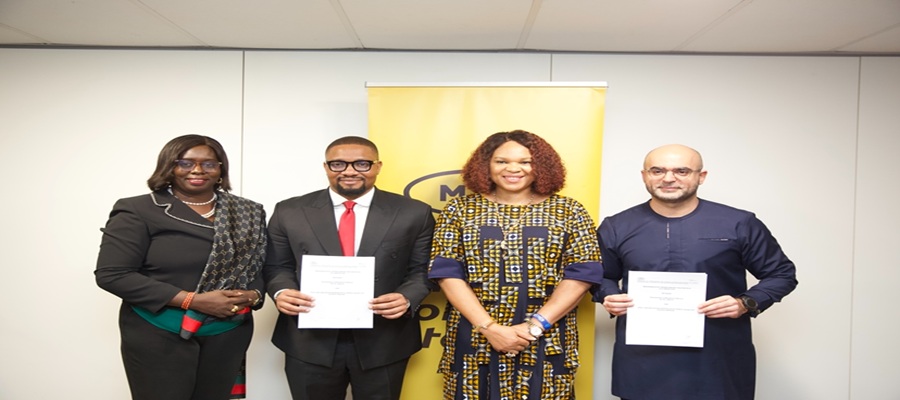Telecom
Key Trends in Sophos 2022 Threat Report

Sophos, a global leader in next-generation cybersecurity, on Wednesday published the Sophos 2022 Threat Report, which shows how the gravitational force of ransomware’s black hole is pulling in other cyberthreats to form one massive, interconnected ransomware delivery system – with significant implications for IT security.

The report, written by SophosLabs security researchers, Sophos Managed Threat Response threat hunters and rapid responders, and the Sophos AI team, provides a unique multi-dimensional perspective on security threats and trends facing organizations in 2022.
The Sophos 2022 Threat Report analyzes the following key trends:
1. Over the coming year, the ransomware landscape will become both more modular and more uniform, with attack “specialists” offering different elements of an attack “as-a-service” and providing playbooks with tools and techniques that enable different adversary groups to implement very similar attacks.
According to Sophos researchers, attacks by single ransomware groups gave way to more ransomware-as-a-service (RaaS) offerings during 2021, with specialist ransomware developers focused on hiring out malicious code and infrastructure to third-party affiliates.
Some of the most high profile ransomware attacks of the year involved RaaS, including an attack against Colonial Pipeline in the U.S. by a DarkSide affiliate.
An affiliate of Conti ransomware leaked the implementation guide provided by the operators, revealing the step-by-step tools and techniques that attackers could use to deploy the ransomware.
Once they have the malware they need, RaaS affiliates and other ransomware operators can turn to Initial Access Brokers and malware delivery platforms to find and target potential victims. This is fueling the second big trend anticipated by Sophos.
2. Established cyberthreats will continue to adapt to distribute and deliver ransomware. These include loaders, droppers and other commodity malware; increasingly advanced, human-operated Initial Access Brokers; spam; and adware. In 2021, Sophos reported on Gootloader operating novel hybrid attacks that combined mass campaigns with careful filtering to pinpoint targets for specific malware bundles.
3. The use of multiple forms of extortion by ransomware attackers to pressure victims into paying the ransom is expected to continue and increase in range and intensity. In 2021, Sophos incident responders catalogued 10 different types of pressure tactics, from data theft and exposure, to threatening phone calls, distributed denial of service (DDoS) attacks, and more.
4. Cryptocurrency will continue to fuel cybercrimes such as ransomware and malicious cryptomining, and Sophos expects the trend will continue until global cryptocurrencies are better regulated. During 2021, Sophos researchers uncovered cryptominers such as Lemon Duck and the less common, MrbMiner, taking advantage of the access provided by newly reported vulnerabilities and targets already breached by ransomware operators to install cryptominers on computers and servers.
“Ransomware thrives because of its ability to adapt and innovate,” said Chester Wisniewski, principal research scientist at Sophos. “For instance, while RaaS offerings are not new, in previous years their main contribution was to bring ransomware within the reach of lower-skilled or less well-funded attackers.
This has changed and, in 2021, RaaS developers are investing their time and energy in creating sophisticated code and determining how best to extract the largest payments from victims, insurance companies, and negotiators. They’re now offloading to others the tasks of finding victims, installing and executing the malware, and laundering the pilfered cryptocurrencies.
This is distorting the cyberthreat landscape, and common threats, such as loaders, droppers, and Initial Access Brokers that were around and causing disruption well before the ascendancy of ransomware, are being sucked into the seemingly all-consuming ‘black hole’ that is ransomware.
“It is no longer enough for organizations to assume they’re safe by simply monitoring security tools and ensuring they are detecting malicious code. Certain combinations of detections or even warnings are the modern equivalent of a burglar breaking a flower vase while climbing in through the back window.
“Defenders must investigate alerts, even ones which in the past may have been insignificant, as these common intrusions have blossomed into the foothold necessary to take control of entire networks.”
Additional trends Sophos analyzed include:
· After the ProxyLogon and ProxyShell vulnerabilities were discovered (and patched) in 2021, the speed at which they were seized upon by attackers was such that Sophos expects to see continued attempts to mass-abuse IT administration tools and exploitable internet facing services by both sophisticated attackers and run-of-the-mill cybercriminals
· Sophos also expects cybercriminals to increase their abuse of adversary simulation tools, such as Cobalt Strike Beacons, mimikatz and PowerSploit. Defenders should check every alert relating to abused legitimate tools or combination of tools, just as they would check a malicious detection, as it could indicate the presence of an intruder in the network
· In 2021, Sophos researchers detailed a number of new threats targeting Linux systems and expect to see a growing interest in Linux-based systems during 2022, both in the cloud and on web and virtual servers
· Mobile threats and social engineering scams, including Flubot and Joker, are expected to continue and diversify to target both individuals and organizations
· The application of artificial intelligence to cybersecurity will continue and accelerate, as powerful machine learning models prove their worth in threat detection and alert prioritization. At the same time, however, adversaries are expected to make increasing use of AI, progressing over the next few years from AI-enabled disinformation campaigns and spoof social media profiles to watering-hole attack web content, phishing emails and more as advanced deepfake video and voice synthesis technologies become available
To learn more about the threat landscape in 2021 and what this means for IT security in 2022, read the full Sophos 2022 Threat Report.
Additional content for the Sophos 2022 Threat Report:
· Video of the headline findings, presented by Chester Wisniewski, principal research scientist, Sophos
· An article on SophosLabs Uncut recapping the report sections
· A Sophos News opinion piece by Wisniewski on the ransomware turf wars
· A Naked Security article introducing the report
Telecom
Africa Must Build Its Own Cybersecurity Intelligence, Says Tizel CEO At AfriTech 5.0

As Africa edges toward an estimated 750 million internet users by the end of 2025, the continent’s expanding digital footprint is increasingly matched by vulnerabilities that threaten its economic and national security.

Happiness Obioha, Managing Director and Chief Executive Officer of Tizel Cybersecurity
This concern took centre stage at the Africa Tech Alliance Forum (AfriTech 5.0), where Happiness Obioha, the Managing Director and Chief Executive Officer of Tizel Cybersecurity, delivered one of the event’s most compelling arguments for a new cybersecurity paradigm rooted in African intelligence rather than foreign technology.
Speaking on the theme “Beyond Firewalls: The Case for Homegrown Cybersecurity Intelligence in Africa,” Obioha maintained that Africa’s cybersecurity risks cannot be effectively mitigated with imported solutions that were never designed for the continent’s distinct digital realities.
She described Africa’s cyber landscape as one defined by unique threat actors, infrastructural limitations, cultural nuances, and business patterns that global security platforms often fail to understand.
According to her, relying solely on perimeter-based defenses such as firewalls is no longer adequate in a world where cyberattacks grow more adaptive, persistent, and sophisticated.
Obioha argued that Africa’s dependence on generic global tools has created a critical gap in the continent’s ability to detect, interpret, and respond to emerging threats, and explained that foreign cybersecurity systems frequently misread local attack patterns or fail to anticipate region-specific vulnerabilities.
As a result, many African organizations operate with a false sense of safety while facing increasingly complex threats ranging from ransomware and financial fraud to targeted breaches on government infrastructure.
The Tizel CEO emphasised that Africa’s long-term security lies in adopting intelligence-led approaches that draw from local insights, indigenous expertise, and continental research, and noted that such solutions allow faster and more precise threat detection because they are built with an understanding of local behaviour patterns and digital environments.
Beyond security improvements, she stressed that homegrown cybersecurity also strengthens national sovereignty, reduces capital flight, expands technical capacity, and creates jobs in one of the world’s fastest-growing sectors.
Obioha cited Tizel Cybersecurity as an example of what locally grounded innovation can achieve, explaining that the company’s model integrates contextual intelligence, real-time monitoring, rapid incident response, and strict adherence to regulatory frameworks.
According to her, Tizel’s work with banks, telecom operators, government agencies, and SMEs demonstrates the measurable impact of Africa-specific cybersecurity architecture.
Among the results she highlighted were the prevention of a major ransomware attack in the financial sector, a significant reduction in network downtime for a telecom operator, and the deployment of effective real-time monitoring systems for a government agency.
She reinforced that Tizel’s success is built on its deep understanding of the African digital ecosystem, a familiarity she described as indispensable for delivering cybersecurity that genuinely protects African institutions.
The region’s business culture, infrastructural diversity, and evolving digital habits, she said, can only be accurately interpreted by experts who operate within the same environment.
Obioha urged African enterprises and governments to take a more deliberate approach toward securing their digital future, and encouraged them to re-examine their cybersecurity posture, invest in indigenous intelligence-driven solutions, and build internal teams equipped to respond to emerging threats.
The survival and competitiveness of African businesses, she noted, will increasingly depend on their ability to align security strategies with the realities of the continent’s rapidly evolving digital economy.
“Africa’s digital future is promising,” she concluded, “but it must be secured with intelligence and innovation that come from within the continent.”
Telecom
MTN Partners with SMEDAN to Drive Digital Growth and Job Creation Nationwide

MTN Nigeria and the Small and Medium Enterprises Development Agency of Nigeria (SMEDAN) have signed a strategic partnership aimed at accelerating the growth, digital capacity, and sustainability of Nigeria’s 40 million Micro, Small and Medium Enterprises (MSMEs).

L-R: Julcit Onigbogi, Head of Legal, SMEDAN; Charles Odii, Director General, SMEDAN; Lynda Saint-Nwafor, Chief Enterprise Business Officer, MTN Nigeria and Ayham Moussa, Chief Operating Officer, MTN Nigeria, during the MTN, SMEDAN Seal Strategic Partnership Signing held at the MTN Plaza, Ikoyi on Thursday, November 27, 2025.
The signing ceremony was held at the MTN Plaza, Lagos, on Thursday, November 27, 2025.
MTN Nigeria’s Chief Operating Officer, Ayham Moussa, reiterated MTN’s commitment to supporting Nigeria’s economic development, stating that MSMEs are the lifeline of Nigeria’s economy.
He said: “SMEs are the backbone of the economy and the backbone of employment in Nigeria. We are delighted to power SMEDAN’s platform and provide tools that help MSMEs reach customers, obtain funding, and access wider markets.
“This collaboration serves both our business and social development objectives.”
Chief Enterprise Business Officer, Lynda Saint-Nwafor, MTN Nigeria described the MoU as a tool to “meet SMEs at the point of their needs,” noting that nano, micro, small, and medium businesses each require different resources to scale.
She stated: “Some SMEs need guidance, some need resources; others need opportunities or workforce support. This platform allows them to access whatever they need.
“We are committed to identifying opportunities across financial inclusion, digital inclusion, and capacity building that help SMEs to scale.”
Speaking at the event, the Director General of SMEDAN, Charles Odii, emphasised the significance of the collaboration, noting that the agency cannot meet its mandate without leveraging technology and private-sector expertise.
He said: “We have approximately 40 million MSMEs in Nigeria, and only about 400 SMEDAN staff. We cannot fulfil our mandate without technology, data, and strong partners.
“MTN already has the infrastructure and tools to support MSMEs from payments to identity, hosting, learning, and more. With this partnership, we are confident we can achieve in a short time what would have taken years.”
Odii highlighted that the SMEDAN-MTN collaboration would support businesses across their growth needs, guided by their four-point GROW model – Guidance, Resources, Opportunities, and Workforce Development.
He added that SMEDAN has already created over 100,000 jobs within its two-year administration and expects the partnership to significantly boost job creation, business expansion, and nationwide enterprise modernisation.
The partnership will feature joint initiatives focused on digital inclusion, financial access, capacity building, and providing verified information for MSMEs. With millions of small businesses depending on accurate guidance and easy-to-access support, MTN and SMEDAN say their shared platform will address gaps in communication, misinformation, and access to opportunities.
The event concluded with the formal signing of the Memorandum of Understanding (MoU), setting the stage for the immediate roll-out of tools, content, and resources that will support MSMEs nationwide.
Telecom
MTN Nigeria Launches Y’ello Data Gifting Campaign as Digital Connectivity Shapes Festive Celebrations

MTN Y’ello Tide is the gift that keeps giving, with MTN exciting Nigerians through a season filled with yellow gifting, digital rewards, and festive moments. This year, MTN is giving customers even more ways to stay connected and celebrate, and the Y’ello Data Gifting initiative stands as one of the many offerings under MTN Y’ello Tide.

MTN Nigeria
With Nigerians embracing more digital-led ways to connect and celebrate during the festive season, MTN Nigeria has introduced its Y’ello Data Gifting initiative as part of the broader MTN Y’ello Tide, designed to encourage customers to share data with loved ones while standing a chance to win prizes worth millions of naira. MTN Y’ello Tide continues to position digital connectivity as an exciting way to gift this season, reinforcing that MTN is giving Nigerians more value at a time they need it most.
The campaign runs from December 1 to 25, offering daily rewards such as Samsung smartphones and ₦20,000 shopping vouchers for the top 20 data gifters each day. As a core part of MTN Y’ello Tide, the data gifting experience helps customers enjoy more yellow moments through rewards, bonuses, and shared connections. Customers who participate also enjoy bonus data, with 1GB awarded to those gifting 10GB or more, and 500MB for gifts ranging between 5GB and 9.99GB. Participation is available through *321# or the myMTN NG app between 10am and 10pm daily.
Across Nigeria, digital behaviour continues to evolve. Internet consumption reached a record 973,455 terabytes in December 2024, marking a 36.5 percent year-on-year growth according to the Nigerian Communications Commission. MTN Y’ello Tide taps into this shift by offering exciting, value-driven digital gifting experiences that help people stay connected throughout the season.
While costs of food and non-alcoholic beverages have risen by over 92 percent in the last three years, and inflation stood at 34.60 percent in November 2024 with food inflation at 39.93 percent, Nigerians continue to prioritise meaningful and cost-efficient ways to stay connected. This shift has led many families to favour experiential or digital gifts, particularly as surveys show that 76 percent of Nigerians experienced income reductions in 2024, based on the PiggyVest Savings Report.
Festive spending has also adjusted to new realities. Items such as Christmas trees now range between ₦23,000 and ₦700,000, up from ₦17,000 to ₦450,000 last year. In this context, telco-led promotions like MTN Y’ello Tide’s Data Gifting campaign offer an alternative form of giving that aligns with today’s lifestyle needs. MTN is giving customers more ways to celebrate in yellow, creating exciting opportunities to share, connect, and enjoy festive rewards.
Nigeria remains a mobile-first market with 103 million internet users recorded at the start of 2024, representing 45.5 percent internet penetration according to DataReportal. Data now functions as a core utility supporting work, education, entertainment, and social connection across the country, making MTN Y’ello Tide’s digital gifting even more relevant this season.
As a Lagos civil servant noted earlier this month, the season remains a time for gratitude and connection, regardless of spending patterns. MTN Y’ello Tide strengthens this sentiment by making it easier for customers to stay connected and enjoy meaningful gifting in an exciting and accessible way.
The Y’ello Data Gifting campaign continues until December 25, with terms and conditions applying. As part of MTN Y’ello Tide, the initiative reinforces that MTN is giving Nigerians a festive season anchored on digital convenience, rewarding experiences, and yellow-themed celebration.
Dial *321# or download the myMTN NG app to start gifting data to your loved ones. Campaign runs until December 25, 2025. Terms and conditions apply.

 Broadcasting3 days ago
Broadcasting3 days agoIt is Official, DStv Confirms Termination of 16 Major Channels

 General News2 days ago
General News2 days agoManufacturers Block More Ransomware, But Data Theft Surges – Sophos Report

 E-Financial3 days ago
E-Financial3 days agoSenate Considers Bill to Empower CBN to Regulate Fintech

 Telecom2 days ago
Telecom2 days agoMTN Nigeria Launches Y’ello Data Gifting Campaign as Digital Connectivity Shapes Festive Celebrations

 Broadcasting3 days ago
Broadcasting3 days agoParamount Africa Shuts Down after 20 Years

 Telecom3 days ago
Telecom3 days agoAfrica’s $1bn Biometric ID Rollout Raises Concerns Over Privacy and Exclusion

 News3 days ago
News3 days agoAfreximbank Taps Nigeria to Lead Africa’s Digital Trade Revolution

 Telecom3 days ago
Telecom3 days agoSenator Akpoti Tops Google Searches in Nigeria’s 2025 Year in Review

























